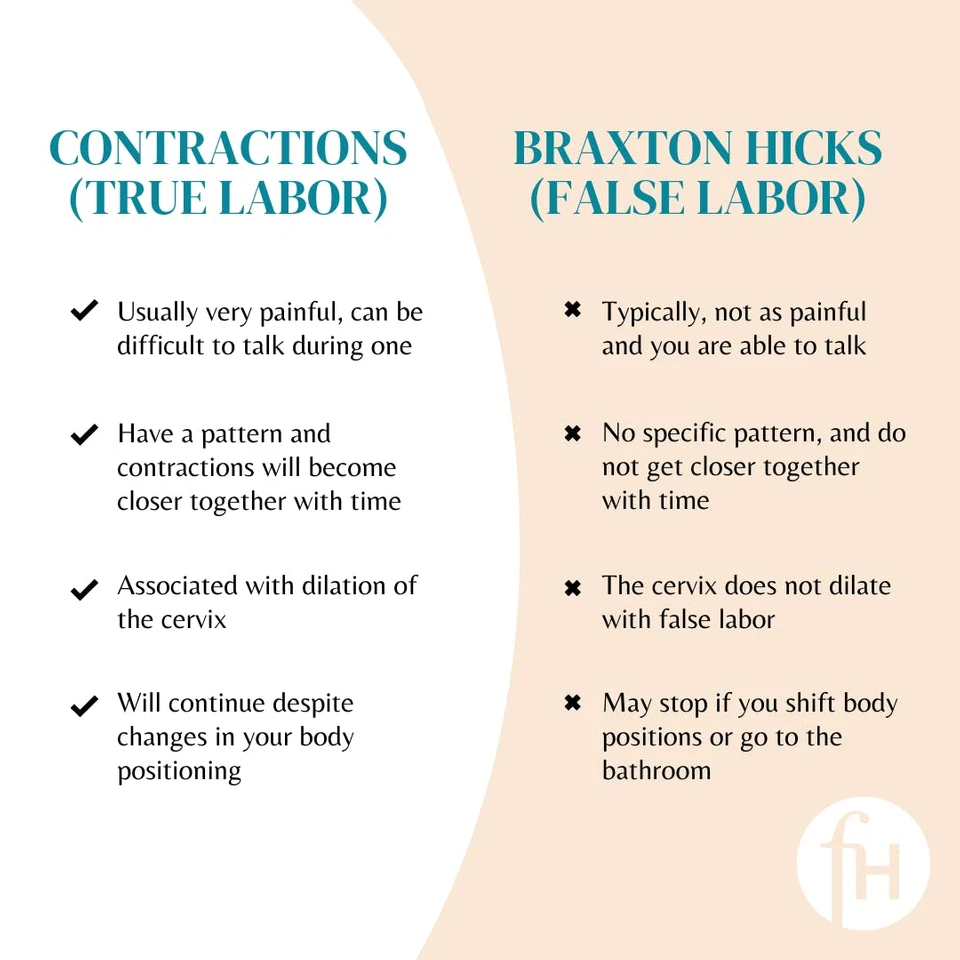Contractions For Labor: What Contractions Feel Like
A contraction is when the muscles of your uterus tighten and relax during pregnancy. Real contractions are what’s needed to push the baby out of the uterus into the birth canal.
Braxton Hicks Vs Contractions
When a person is in real labor, the contractions are painful, last about 30 to 60 seconds, occur at evenly spaced intervals, and the time between intervals decreases as true labor progresses. For example, you may experience a one minute contraction every 10 minutes that then goes to a one minute contraction every 7 minutes. However, in false labor, Braxton Hicks contractions usually do not have a pattern of occurring at regular intervals and Braxton Hicks contractions do not get closer together. Braxton hicks are more likely to occur earlier in pregnancy whereas real contractions will happen closer to one’s due date. Additionally, false labor is not associated with a dilation of the cervix, which does happen in true labor.
Perhaps one of the most important distinctions is the level of pain associated with a real contraction. In most pregnancies, contractions for labor are very powerful. It is challenging to talk when you are experiencing a real contraction. You may feel winded and the labor contractions will get stronger with time. Braxton Hicks may cause a tightening sensation in the stomach and pelvic area but they are usually not extremely painful. They also don’t become more intense with time.
Finally, Braxton Hicks may resolve if you drink water, change your body position or go to the bathroom. If you are in true labor and having real contractions, hydrating yourself, changing the way you are sitting, or emptying your bladder will not cause true labor to stop.
What Does A Labor Contraction Feel Like?
So, what does a labor contraction feel like in someone who is about to have a baby? A real contraction in labor is often described by pregnant persons as a gradual increase in pain, a peak in the pain that is associated with a hardening of the belly area, and then a fading away of the pain.
Contractions and early signs of labor can present differently in different people. Some pregnant persons may experience pain in their back or in their pelvic area, and some may even have pain that is similar to menstrual cramping. For some people, the pain of a real contraction can start in the back and then move to the front of the body. In others, the pain can be similar to the cramping you may experience when you are having diarrhea (1). According to the American College of Obstetrics and Gynecology, pain in false labor is not usually felt in one’s back. False labor is typically only associated with pain in the front part of the body (2).
Related: Round Ligament Pain In Pregnancy
Braxton Hicks Vs Contractions: Take Home Points
In true labor, contractions will be evenly spaced, and as the intensity of the contraction increases, the time between each contraction will also get shorter. While occasional braxton hicks can be painful, these are generally not extremely intense and they may go away with positional changes, drinking water, or using the bathroom. Real contractions are also associated with a dilation of the cervix as your body prepares to push the newborn through the birth canal. It is important to time your contractions as well as contact your doctor, or go to the hospital if you suspect that you are in real labor.
Sources:
- https://my.clevelandclinic.org/health/articles/9686-true-vs-false-labor
- https://www.acog.org/womens-health/faqs/how-to-tell-when-labor-begins?utm_source=redirect&utm_medium=web&utm_campaign=otn
We discuss products we think are useful to people. If you buy something through our links, we may earn a commission. Remember to check with your personal physician to see if a product recommended is right for you.








